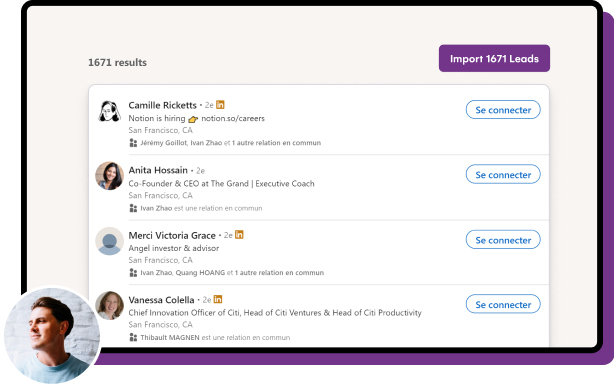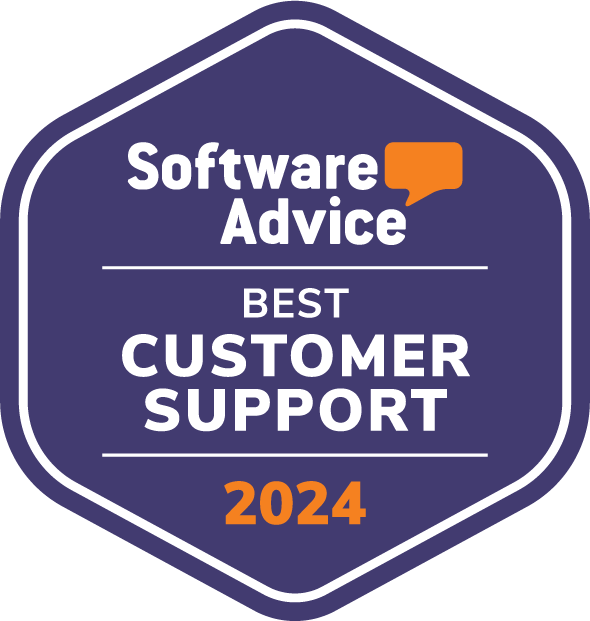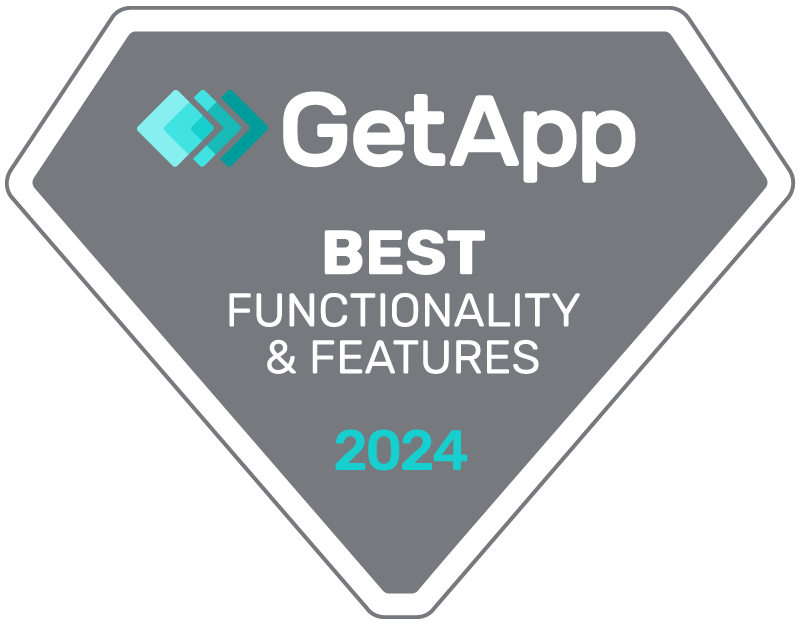TL;DR
Master customer management to build lasting relationships and drive growth. Understand how customer management differs from CRM, discover its key benefits, and learn 10 actionable strategies to implement.
– Build strong customer relationships for increased loyalty and lifetime value (CLV).
– Gather valuable leads and client data through analysis.
– Proactively manage needs, pain points, and feedback for satisfaction.
– Improve operational efficiency with streamlined, customer-centric processes.
– Differentiate customer management (strategy) from CRM (software).
Automate your B2B prospecting Test La Growth Machine for free for 14 days
Start free trialTable of contents
Customer management has become a crucial aspect of any successful organization. It involves the strategic planning, implementation, and analysis of various practices aimed at building and nurturing strong relationships with customers.
What is customer management and how is it different from CRM? What’s the benefit of a customer management strategy? What are the best strategies that exist?
In this article, we will explore the definition of customer management, explain how it differs from customer relationship management (CRM), highlight the benefits it offers, and provide you with the top 10 strategies to optimize customer management in your business.
What Is Customer Management?
Customer management refers to the systematic approach companies take to organize, analyze, and improve their interactions with customers throughout their entire lifecycle. It revolves around understanding customers’ needs, preferences, and behaviors to deliver exceptional experiences that drive customer loyalty and advocacy.
Customer management is a critical aspect of running a successful business. More than just acquiring new customers, it focuses on building long-term relationships and fostering customer loyalty.

By understanding the needs and preferences of customers, you can tailor their products, services, and interactions to meet and exceed customer expectations.
Example 🔍
A great example of customer management would be the development and implementation of loyalty programs. These programs aim to reward and retain loyal customers by offering exclusive benefits, discounts, or personalized services. By nurturing customer loyalty, businesses can increase client lifetime value and foster a community of brand advocates.
But customer management also extends beyond the transactional aspect of the client relationship. It involves actively seeking and responding to feedback, whether through surveys, social media listening, or other channels… Which isn’t sales or marketing, but much more a job for support. By actively engaging with your clients and addressing their concerns, you can build trust and loyalty, ultimately leading to long-term satisfaction and advocacy.
Several components get involved in the strategy.
Customer segmentation
One key component of customer management is customer segmentation. Companies divide their customer base into different groups looking at various characteristics, such as demographics, purchase history, or behavior. This segmentation allows businesses to create targeted marketing campaigns, personalized offers, and customized experiences for each segment.
Customer feedback
Another important aspect of customer management is customer feedback and engagement. Companies actively seek feedback from their customers through surveys, reviews, and social media interactions. This feedback helps companies understand how they are performing and identify areas for improvement.
Relationship Management
It also involves effective communication and relationship building. Companies use various channels, such as email, phone, and social media, to stay connected with their customers. Regular communication helps companies stay top-of-mind and allows them to provide relevant updates, promotions, and client service. Building strong relationships with customers is essential for long-term success, as loyal customers are more likely to refer others and become brand advocates.
Effective customer management is not limited to the sales and marketing departments but extends to every customer-facing function within the organization, including customer service, product development, and operations.
In conclusion, customer management is a comprehensive approach that encompasses various aspects of a business. It involves understanding customer needs, segmenting the customer base, actively seeking feedback, building relationships, and involving multiple departments within an organization.
Customer Management and CRM: How Is It Different?
While customer management and customer relationship management (CRM) are often used interchangeably, there is a subtle difference between the two. CRM is a software solution that supports the processes involved in managing customer relationships.

On the other hand, customer management is a broader concept that encompasses both the strategic approach and the use of CRM software. Customer management is the overarching framework that guides companies in implementing CRM and other customer-centric practices effectively.
Customer management goes beyond the mere use of CRM software. It involves a comprehensive understanding of the customer journey, from the initial contact to post-purchase stage. This strategic approach focuses on building long-term relationships with customers by providing personalized experiences and meeting their evolving needs.
Companies need to gather and analyze data from various touchpoints to gain information into customer preferences, purchase patterns, and satisfaction levels. This information helps you tailor your products, services, and marketing efforts to meet the specific needs and desires of your customers. This level of information can be achieved with a CRM solution, with the objective of improving your customer management overall.
Another key aspect to explore: customer management also involves aligning all departments within an organization towards a customer-centric approach. It requires breaking down silos and fostering collaboration among sales, marketing, customer service, and other teams.
By sharing customer outputs and feedback across departments, companies can ensure a consistent and seamless customer experience throughout the entire customer journey. This also goes with a CRM tool.
In addition to CRM software, customer management may involve the use of other tools and techniques.
Example 🔍
For example, companies may employ customer segmentation strategies to group customers based on their characteristics and behaviors. This segmentation allows businesses to target specific customer segments with tailored marketing campaigns and offers.
In summary, while CRM is a vital component of customer management, it is important to understand that customer management encompasses a broader strategic approach. It involves understanding customer behavior, aligning departments towards a customer-centric approach, employing segmentation strategies, implementing loyalty programs, and actively seeking customer feedback.
By adopting a comprehensive customer management framework, you can effectively implement CRM software and other customer-centric practices to build strong and lasting relationships.
What Are the Benefits of Customer Management?
Implementing effective customer management practices offers numerous benefits for a company.
Improve CLV
Firstly, it helps companies build strong relationships with their customers, leading to increased loyalty and higher customer lifetime value. By understanding their needs and preferences, organizations can tailor their products and services to meet customers’ expectations more effectively.
This customer-centric approach fosters brand advocacy and positive word-of-mouth, attracting new customers while retaining existing ones.
Get leads and client data
Moreover, it also enables your company to gather valuable customer information or leads data through data analysis. By leveraging customer data, organizations can identify patterns, trends, and areas for improvement in their customer experience journey.
Example 🔍
For example, by analyzing purchase history and browsing behavior, companies can gain a deeper understanding of their customers’ preferences and anticipate their future needs. These insights can drive informed decision-making, leading to targeted marketing campaigns, personalized offers, and enhanced customer service.
It’s also a way to check on your sales leads database performance, looking at the conversion rate for example.
Manage needs, pain points and feedback
Additionally, customer management plays a crucial role in proactively identifying and addressing customer issues. In today’s competitive market, customer satisfaction is paramount.
By actively listening to customer feedback and promptly resolving any concerns, companies can build trust and loyalty, positioning themselves as reliable partners in the eyes of their customers.
This not only ensures customer satisfaction but also minimizes churn, as customers are more likely to stay with a company that values their opinions and takes action to address their needs.
Improve process and organization
Furthermore, effective customer management can also lead to increased operational efficiency. By streamlining customer interactions and implementing automated processes, organizations can reduce manual errors and improve response times.
In conclusion, customer management offers a wide range of benefits. From building strong relationships and gathering valuable insights to proactively addressing customer issues and improving operational efficiency, effective customer management is essential for long-term success in today’s competitive market.

[sc name=”cta_











Comments